With 75 power-producing dams, the U.S. Army Corps of Engineers is the largest generator of hydropower in the United States. Most of its largest hydroelectric dams are located on the Columbia, Snake, Willamette, and Rogue Rivers in the Pacific Northwest. These rivers are also home to important anadromous fish species, such as Chinook salmon and steelhead. In this interview, several professionals from the Army Corps’ Portland District and its Denver-based Hydroelectric Design Center (HDC) tell us more about the Army Corps’ efforts to make its hydropower generation activities more fish friendly, both in the Northwest and nationwide. We hear from Jim Calnon, the chief of the mechanical-structural branch of the HDC; Tom Conning, a public affairs specialist at the Portland District; Brad Eppard, a fish biologist at the Portland District; Rachel Laird, a fish biologist in the fish passage section at the Portland District; and Dan Patla, the chief of the turbomachinery section of the HDC.
Hydro Leader: Please tell us about your backgrounds and how you came to be in your current positions.
Tom Conning: I am the deputy chief of Portland District’s Public Affairs Office and lead the media relations team. I’ve been with the district for more than 5 years and serve as an advisor to multiple project delivery teams that deal with issues including fish passage at Willamette Valley dams, hatchery issues, and water management.
Brad Eppard: I am a fish biologist and the chief of the fish passage section with the Portland District. I have been managing and carrying out research for 28 years, 17 of them with the Army Corps. Most of my work has concerned passage and survival in the lower Columbia and Willamette Rivers.
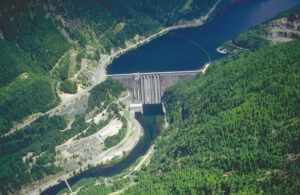
Jim Calnon: I am the chief of the mechanical-structural branch of the HDC. I have 60 people working in different sections of my branch on turbomachinery, mechanical systems, structural design, and engineering. I’ve been with the HDC for almost 8 years; prior to that, I was a mechanical engineer with the Portland District for 16 years. Most matters related to turbine runners for improved fish passage are dealt with by my staff.
Rachel Laird: I am a fish biologist in the fish passage section at the Portland District. My background is in population biology and population dynamics modeling. In the past, I’ve worked with salmon, sturgeon, Atlantic cod, gray seals, pilot whales, and bottlenose dolphins.
Dan Patla: I’m the chief of the turbomachinery section of the HDC. I’ve been working for the Army Corps for 18 years. My team is directly involved with any kind of turbine replacement program, and we work on the designs for improved fish passage.
Hydro Leader: Please introduce the fish passage and fish management efforts carried out by the Army Corps’ Portland District.
Tom Conning: The main areas of the Portland District are the lower Columbia River, the Willamette River basin, and the Rogue River basin. The Rogue and Willamette have different challenges than the Columbia. In the Willamette and Rogue basins, we tend to have high-head dams whose reservoirs fluctuate a lot during the year. Because the reservoirs are drawn down in the winter for flood-risk-management purposes and refilled for conservation in the summer, their levels can fluctuate by 100 feet. We have pretty good fish passage upstream because we have adult fish collection facilities from which we truck the fish around the dams. The remaining challenges are in downstream passage, because those dams are blocking the fish. We are looking into building a floating fish collector and temperature-control structures.
We have a lot of infrastructure in place in the lower Columbia that is being modified continuously to more efficiently move fish upstream and downstream past the dams, so we don’t have the same fish-passage problems. However, there are still things we do at the lower Columbia dams to spill certain amounts of water and to attract fish to the right areas so that they can move in a safer manner.
Hydro Leader: Brad and Rachel, would you tell us about those existing passage structures and about any other structures or projects you are currently working to install?
Brad Eppard: Focusing on adult salmon migrating upstream in the Columbia, we haven’t made a lot of structural changes over the years, because the existing ladders pass fish well. We do some operational things for adult salmon, most of which entail spilling water or operating turbines that are closer to the ladder entrances on the downstream side, which attract adult salmon and help them find the ladder entrance.
Most of the work we’ve done over the years has focused on the juvenile side of the salmon life cycle, namely migration from their natal streams down to the ocean. Getting them past the dams safely has been an important focus of ours for a long time. One of the primary strategies we’ve adopted is what we call surface flow routes, which draw water from near the surface on the upstream side of the dam and pass water and fish over the dam via a structural component or a man-made waterfall. Salmon are surface-oriented fish, and they are more attracted to areas where they don’t have to dive deep to pass, so surface routes have been proven successful. All eight of our mainstem dams on the lower Columbia and Snake have surface flow routes.
The other structural solution we have in place are screened bypass systems that guide fish entering the powerhouses of these dams into what we call juvenile bypass systems, which route them around the turbines. We have a metric that we call fish passage efficiency that is the proportion of fish that pass through nonturbine routes divided by the total number
of fish that pass the dam. The fish passage efficiency of most of our dams is in the 80–95 percent range. Bonneville has a fish passage efficiency in the 75–80 percent range, which is the lowest in the region. Over the years, especially the last few years, increasing levels of spill has been a primary strategy for increasing fish passage efficiency, and it has been successful. Most fish pass over the spillway at any given dam.
Rachel Laird: We also use a weir that was previously used for downstream passage to skim warm water from the surface of Foster Reservoir and warm the fish ladder for adults. With respect to the collectors that are currently being designed, the one for Detroit Dam is the furthest along. Initially, when we embarked on the design process, there were many collectors installed in the region, but none at high-head dams. We learned that there had to be some modifications to use them at a high-head dam, and we adapted the Detroit design. The current collector design is integrated with the turbine, so it operates when the turbines are operating, making it more compatible with hydropower needs. It also fluctuates with lake elevation. We have adaptive plans in place for what to do when that collector might fall below operating range or when the flow isn’t constant. For example, we’ve talked about installing pumps to keep everything going during power peaking and about how to make turbine operations compatible with daily fish passage times to keep constant flow through the collector. We’ve also made some fish guidance design updates in recent years. The collector at Cougar Dam is also in the design phase; it is similar to the one at Detroit. The area where fish congregate at Cougar Dam is smaller, which has implications for the design of the floating screen structure.
Hydro Leader: What factors improve fish passage through a turbine or other mechanical system, and how do you design systems with improved fish passage?
Dan Patla: We’ve had some time to study different mortality mechanisms for fish in the turbine environment, and our new designs are focused on trying to eliminate those mechanisms. One mechanism is mechanical strike. We aim to minimize strikes from either stationary or rotating equipment, and we’re also looking at ways of eliminating gaps to prevent tension and shearing. Finally, we are trying to ensure that the pressure does not go below certain thresholds that would endanger the fish. We’ve also done draft-tube modifications to improve flow for indirect survival, trying to ensure that we’ve got the appropriate balance in different barrels and that fish can move through the turbine environment in a way that isn’t going to reduce their ability to react after they’re out of it.
The Army Corps, the power-marketing agencies, the National Oceanic and Atmospheric Administration, and a contractor cooperatively design turbines. First, we do numerous computer simulations using computational fluid dynamics. Then we take the design, make a scaled-down prototype, and test it in a high-head model test facility, which is usually contractor owned, to try to determine its operating characteristics, such as efficiency, cavitation performance, and runaway. We also take the design to the Waterway Experiments Station in Vicksburg, Mississippi, a model test facility that has observational models that allow us to see through the entire turbine environment. We’ll inject dye and neutrally buoyant beads into the water and observe the passage in a less quantitative, more qualitative manner, watching for mechanical strikes. After completing one iteration, we’ll make various tweaks to the design—maybe we’ll go from six blades to five blades—and do another iteration of testing. It’s a fairly long process, but we’ve completed the design of a few turbines that are now installed at Ice Harbor Dam.
Jim Calnon: It turns out that at the same time that we make the turbines better for fish passage, we’re able to improve their efficiency with respect to power generation. We see efficiency gains in power generation of 1–3 percent. Since the HDC is a national center of expertise and we work on projects across the nation, we also are getting requests to incorporate dissolved oxygen improvements in other parts of the country. For example, we are looking at installing aerating runners at facilities in the South Atlantic Division to improve the dissolved oxygen levels in waterways and rivers to improve the survival of sport fisheries.

Hydro Leader: An improved-fish-passage turbine has already been installed at Ice Harbor Dam. How many facilities does the Army Corps intend to replace turbines at in total?
Dan Patla: At Ice Harbor, we’ve installed one turbine that has been tested for fish survival rates, and we have two others going in. At McNary Dam on the Columbia, we are designing replacement turbines for 14 units. As at Ice Harbor, we will install a variety of six-blade turbines and adjustable-blade Kaplan turbines. We’re also designing plans and specs for 14 and potentially up to 16 turbines at John Day Dam. All of those will be designed for fish passage.
To answer your question a little more broadly, the Army Corps intends to use this technology for all replacement turbines in areas with migratory fish. Whenever those turbines need to be replaced, we will look to incorporate these technologies and improvements. From a hydraulic turbine design standpoint, every dam is unique, so we can’t rapidly create one design that will be applicable in all situations. Generally speaking, all designs are unique. There are a certain number of units on the Lower Snake that are very similar to some on the Columbia, but that’s more an exception than a rule.
Hydro Leader: What is public opinion regarding the fish friendliness of hydropower dams in the Pacific Northwest like? What are the Army Corps and other entities doing to publicize the work you’re doing?
Tom Conning: Public opinion is split in many ways. There are advocates for hydropower, especially on the Columbia and Snake Rivers. There are also detractors. At the Portland District, we try to highlight the challenges and the balance we must strike at our varied dams. Fish passage efficiency at the lower three Columbia dams is pretty good, but we can make things better. We’ve done some tweaking at those dams to help Pacific lamprey navigate up and down the river. We can always do better in that sense. There are different challenges in the Willamette and Rogue basins. A lot of people who recreate on the reservoirs there don’t understand their operations and don’t want changes to water management to affect things such as reservoir level. The same goes for hydropower and fish passage. There are a lot of strong opinions regarding the dams and reservoirs in the Willamette Valley, and users don’t always care about the balance that we try to strike.
Hydro Leader: What results have you seen from your activities, and what goals do you want to reach in the future?
Brad Eppard: A biological opinion in 2014 established dam passage survival performance standards for each of our dams. We had to achieve a certain level of survival for juvenile Chinook salmon and steelhead passing our dams and prove, through research, that we were reaching those levels. We did extensive studies for about 5–6 years at all our dams, from Bonneville Dam to Lower Granite Dam on the Snake River. Both the Portland and Walla Walla Districts were involved. We demonstrated that survival was around 95–96 percent for fish passing those dams. It’s been roughly 7–10 years since those studies were completed.
Rachel Laird: I don’t think we know the exact minimum passage level we need for viable populations without knowing the fate of those fish. There are certain factors we cannot change, such as ocean conditions. At some projects, the passage metric has been a little lower than what we thought we needed in certain years, but there has been good population performance. We essentially must look at the fate of fish at almost every project. The generation time of salmon and steelhead is in the 4- to 5-year range, so we must pair up the juvenile downstream passage with what we get back, given that there are other factors that are outside the Army Corps’ control.
Hydro Leader: What is your vision for the future?
Rachel Laird: That we continue to react adaptively, since the needs are changing almost daily. I like the path of learning from others in the region who have attempted different passage alternatives and of improving continuously. I appreciate that our designs are living documents that aren’t necessarily set in stone. I think that bodes well for Endangered Species Act requirements and responsibilities, so I’d like to see that continue. I would also like to see more information on those metrics within the context of the life cycle of salmon.
Dan Patla: I would love it if we had a vision of a future in which hydropower is noticed and recognized as a green, renewable resource that is viable and extremely powerful. We are working to make it an even deeper shade of green, if you will, with our efforts to improve fish passage and downstream water quality in this region and other regions.
Jim Calnon: We are trying to achieve multiple goals, including excellent fish passage, to make sure that we’re good stewards of the environment and our natural resources. Ideally, we will continue our work to develop improved-fish-passage runners so that they are the preferred passage route for juvenile fish passing downstream past a dam. The idea is to eventually get to the point at which the efficiency of a turbine in passing juvenile fish exceeds that of a spillway, a bypass system, or any other route. It’s also important that we mention in every stage of these discussions that hydropower is a carbon-free energy source that enables the integration of other renewables into our power system. Without hydropower, it would be difficult to integrate the solar and wind assets in this region into the grid.
Jim Calnon is the chief of the mechanical-structural branch of the Hydroelectric Design Center.
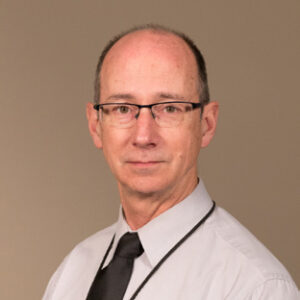
Tom Conning is a public affairs specialist at the U.S. Army Corps of Engineers’ Portland District.

Brad Eppard is a fish biologist at the Portland District.
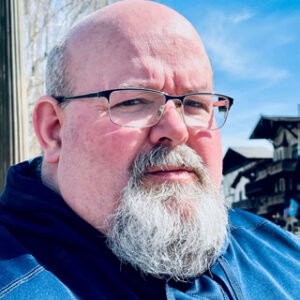
Rachel Laird is a fish biologist in the fish passage section at the Portland District.
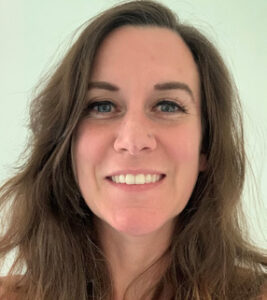
Dan Patla is the chief of the turbomachinery section of the HDC.
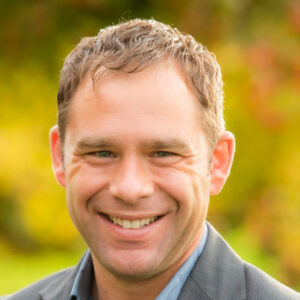
For more information, please contact cewnp-pa@usace.army.mil.

